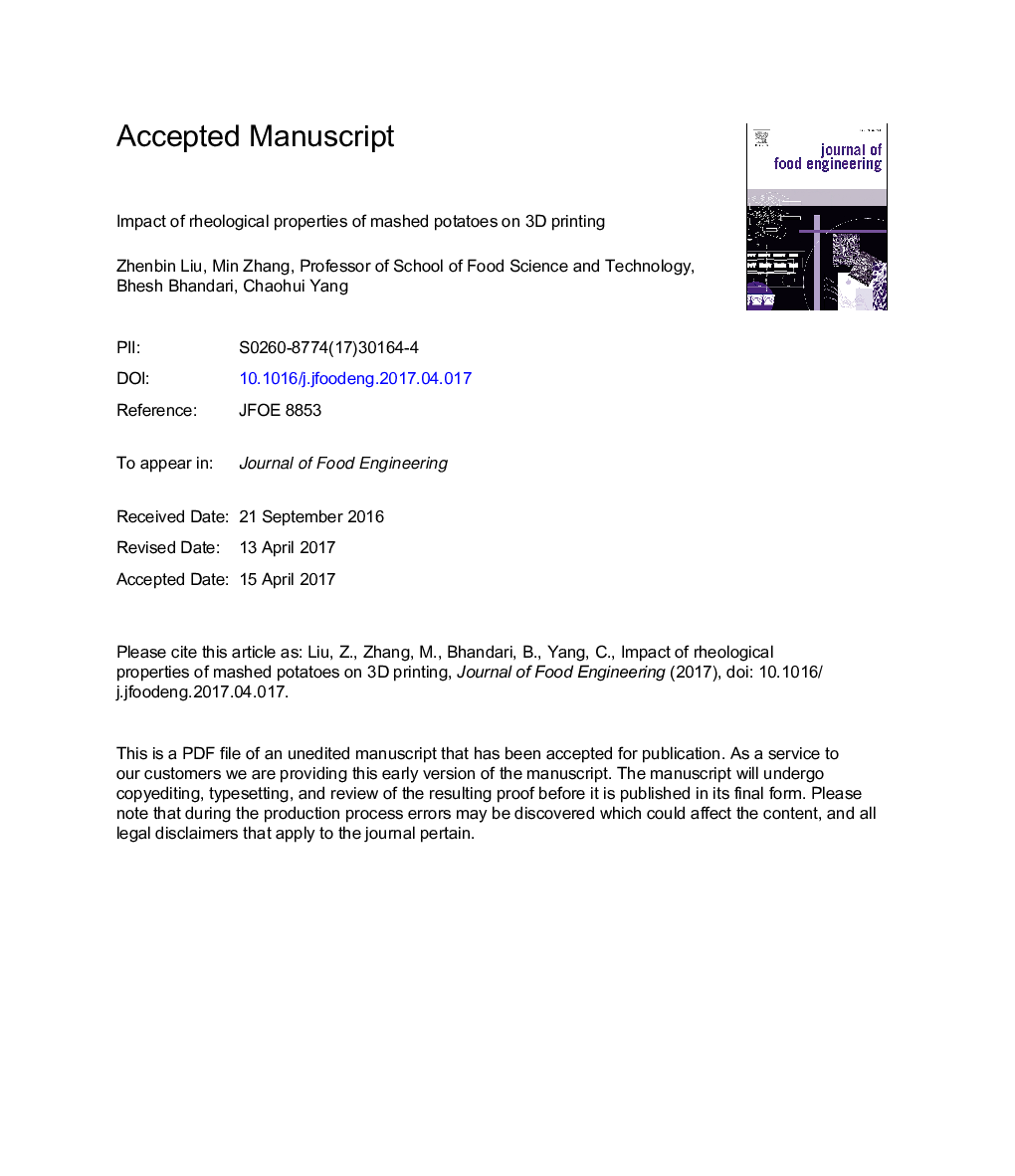| Article ID | Journal | Published Year | Pages | File Type |
|---|---|---|---|---|
| 6664834 | Journal of Food Engineering | 2018 | 30 Pages |
Abstract
Rheological properties of the mashed potatoes (MP) with addition of potato starch (PS) and their 3D printing behavior were investigated. Both flow ramp and dynamic oscillation frequency experiments were used to characterize the rheological properties of the mixtures. The correlation between the formulation and processability during 3D printing was established. MP with 0% PS possessed low yield stress (Ï0) (195.90Â Pa) and printed objects deformed in sagged afterwards. Whereas, addition of 2% PS displayed excellent extrudability and printability, i.e., shear-thinning behavior, consistency index (K) of 118.44 (Pa
- sn), Ï0 of 312.16Â Pa and proper elastic modulus (Gâ²). At such condition, the printed objects possessed smooth shape, good resolution, and could withstand the shape over time. Although MP with addition of 4% PS represented good shape retention due to proper Ï0 (370.33Â Pa) and Gâ², the poor extrudability made it difficult to print due to high K (214.27Â Pa
- sn) and viscosity.
- sn), Ï0 of 312.16Â Pa and proper elastic modulus (Gâ²). At such condition, the printed objects possessed smooth shape, good resolution, and could withstand the shape over time. Although MP with addition of 4% PS represented good shape retention due to proper Ï0 (370.33Â Pa) and Gâ², the poor extrudability made it difficult to print due to high K (214.27Â Pa
- sn) and viscosity.
Related Topics
Physical Sciences and Engineering
Chemical Engineering
Chemical Engineering (General)
Authors
Zhenbin Liu, Min Zhang, Bhesh Bhandari, Chaohui Yang,
